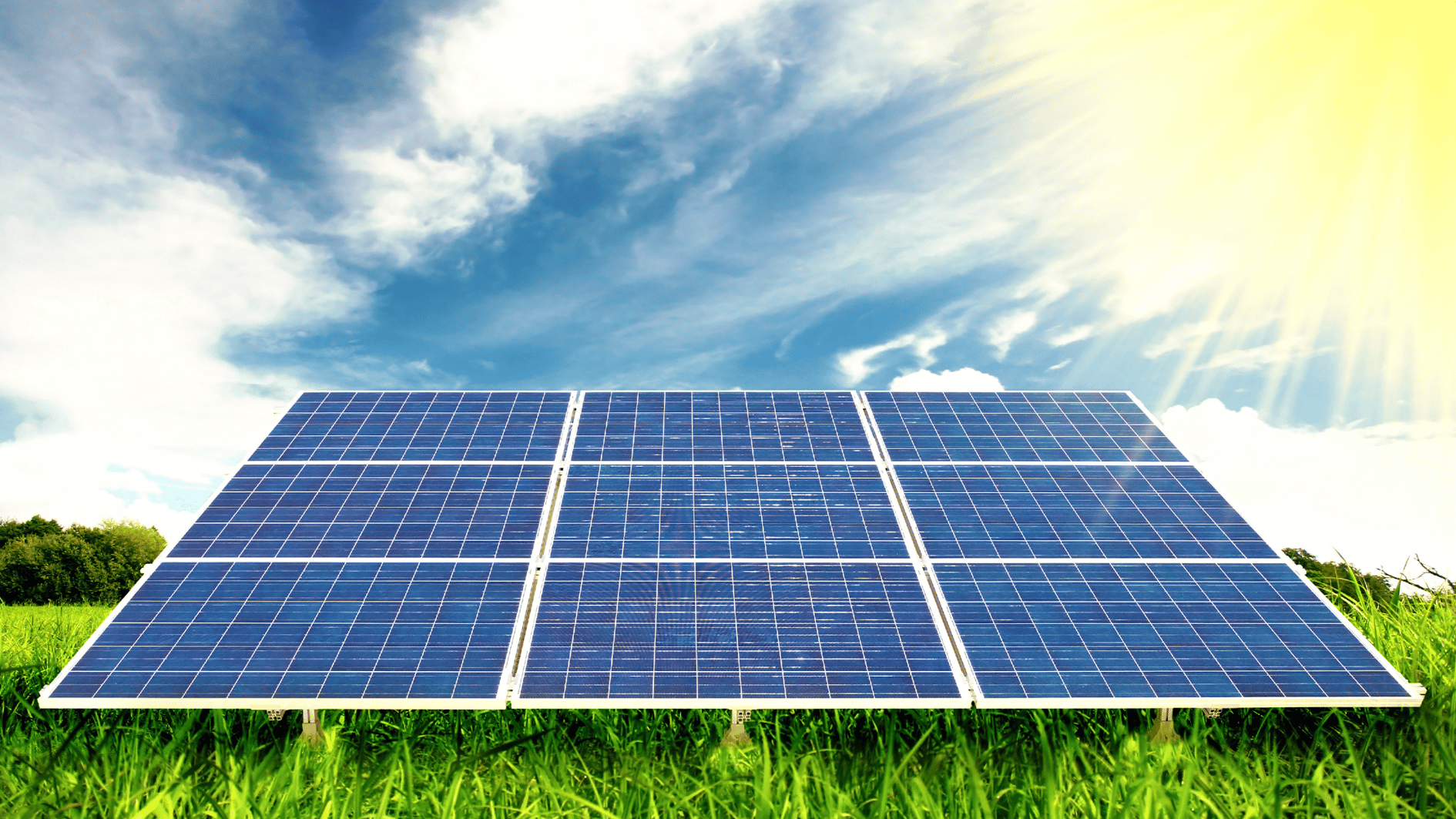Image source: Canva.com
Most residential solar panels available in 2024 produce between 250 and 400 watts each. These panels are typically sufficient to power appliances like your TV, microwave, and lights. To power an entire home, you generally need between 15 and 30 panels.
The electricity output of your solar panels plays a crucial role in your long-term savings. If your system doesn’t generate enough power to cover your electric bill, it will take longer to recoup the cost of installation. The panel’s wattage is a key factor in its power production. If you have a smaller roof, choosing high-wattage panels can help maximize your energy output and efficiency.
Choosing the right solar panel depends on key factors such as your roof’s size, shading, orientation, and sunlight exposure. We’ll work closely with you to identify the ideal panel wattage, ensuring your investment delivers maximum efficiency and savings.
Key Factors Affecting Solar Panel Energy Output
Solar panels convert light into electricity through photovoltaic (PV) cells, and the amount of energy they produce depends on their wattage, which is influenced by the efficiency and number of these cells. Wattage ratings reflect a panel’s power output under ideal conditions of sunlight and temperature.

Wattage and Efficiency
Solar panels convert sunlight into electricity through photovoltaic (PV) cells. The wattage of a panel reflects its power output under ideal conditions of sunlight and temperature. Higher wattage panels are generally more efficient, converting a greater percentage of sunlight into usable energy. Most residential panels today have cells that convert 17-22% of sunlight into electricity. Monocrystalline cells are more efficient and generate more power compared to polycrystalline cells, which are less expensive but offer lower efficiency.
Recent advancements, such as those developed by the National Renewable Energy Laboratory (NREL), have achieved up to 39.5% efficiency, though these high-efficiency panels are not yet commercially available. Future improvements may further increase panel efficiency.
Impact of Panel Size
Larger panels can achieve higher wattage ratings not necessarily due to increased efficiency but because of their larger physical size. For example, a 400-watt panel will be physically larger than a 350-watt panel, providing more power simply due to its size. Residential panels typically come in two sizes: 60-cell and 72-cell. The latter, used more often in commercial settings, covers more roof space. Panels with 120 cells often use half-cut technology, enhancing efficiency.
Sunlight Exposure
The amount of sunlight your panels receive significantly affects their energy production. Here’s how to maximize it:
Minimize Shading
Ensure your panels receive direct sunlight by removing or trimming any obstructions, such as trees.
Optimal Orientation
Panels facing south at an angle of about 30 degrees generally produce the most energy. East- and west-facing panels can also be effective. The ideal angle depends on your latitude, typically ranging between 15-40 degrees.
Maximize Sunlight Hours
Panels generate more electricity in summer and in areas with longer daylight hours. Positioning your panels where they receive the most sunlight throughout the day can enhance their performance.
Panel Tilt and Orientation Efficiency
When setting up solar panels, two important factors to consider are orientation (direction) and inclination (tilt). These affect how much sunlight your panels can capture.
- Orientation refers to the direction your solar panels face, typically measured as the angle off due south. For example, if your solar panels face directly south (adjusted for magnetic declination), the orientation is 180°. Here’s a guide:
- South-facing = 180°
- East-facing = 90°
- West-facing = 270°
- Inclination or tilt is the angle at which the panels are positioned relative to the ground. For example:
- A flat roof has a tilt of 0°
- A roof with a slope of 12 inches for every 12 inches horizontally (12 in 12) has a 45° tilt
- Vertical panels (like those on walls) would have a 90° tilt
Tilt and orientation significantly impact solar panel performance, but there’s flexibility in how they’re set up across the U.S. For example, in areas where the ideal tilt angle is around 30°, solar panels can be tilted anywhere between 0° (flat) and 55° and still capture 90% to 100% of the available solar energy. Similarly, even if the panels aren’t facing perfectly south, they can still perform well if they’re angled within about 65° east or west of due south.
In short, solar panels don’t need to be perfectly aligned to work efficiently, but fine-tuning these angles helps maximize energy production.

How to Calculate a Solar Panel’s Output
Estimating the electricity production of your solar panel system involves a few steps and benchmarks. Here’s a guide to help you calculate:
Daily Solar Panel Output
To estimate daily electricity production (in kilowatt-hours, kWh), use this formula:
Daily Output (kWh)=1,000Panel Size (m²)×1,000×Panel Efficiency (decimal)×Sun Hours per Day divided by 1,000
Example:
- Panel size: 1.6 m²
- Efficiency: 20% (0.2)
- Sun hours per day: 5.5 (average in the U.S. for July, based on NREL data)
Calculation:
1.6×1,000=1,600
1,600×0.2=320
320×5.5=1,760
1,440 : 1,000 =1.76 kWh per day
Monthly Solar Panel Output
To calculate monthly output, multiply the daily output by the number of days in the month:
Monthly Output (kWh)=Daily Output × 31
1.76×31=54.56 kWh per month
Output per Square Meter
To determine the output per square meter, use:
Output per m² = Total System Capacity (W) x Number of Panels divided by Total Panel Area (m²)
Example:
- 12 panels, each 320 W
- Total capacity: 16 × 320=3,840 W
- Total area: 12 × 1.6=19.2 m²
Calculation:
3,840 : 19.2 = 200 W per m²
Watts per Solar Panel
Most residential panels produce between 250 W and 400 W each.
What This Means for You as a Homeowner?
Using the example of a solar panel with a size of 1.6 m², 20% efficiency, and 5.5 average sun hours per day, your system can produce 1.76 kWh per day. Over a month, this totals 52.8 kWh of clean, renewable energy.
If you install a system with 12 panels (each 320 W), it would generate around 200 W per square meter. This means you can expect significant energy production, helping to reduce your electricity bills and reliance on the grid.
By understanding these numbers, you can estimate your solar output and savings potential based on your home’s specific conditions.
Factors Affecting Solar Panel Output
Capacity
This is the maximum electricity output under ideal conditions, typically measured with 1,000 W/m² of sunlight per panel.
Efficiency
This is the percentage of sunlight the panel converts into electricity. Most residential panels today have an efficiency around 20%. While some premium panels can exceed 22%, the range of 20-22% represents the most common high-efficiency residential panels available today.
Materials
Monocrystalline panels are the most efficient and compact, while polycrystalline panels are more affordable but slightly less efficient.
Roof Factors
Direction
In the U.S., south-facing roofs perform best, but east and west-facing roofs are also effective.
Angle
A tilt angle of about 30 to 40 degrees is optimal, but this can vary slightly depending on location.
Shade
Keeping panels free from shade or obstructions maximizes their efficiency and output.
Location
Sunlight availability varies; southern regions receive more sun compared to northern areas.
To ensure your solar panel system meets your energy needs effectively, consider factors such as panel wattage, efficiency, and sunlight exposure. By understanding these elements and calculating your potential output, you can make informed decisions and optimize your investment in solar energy.





